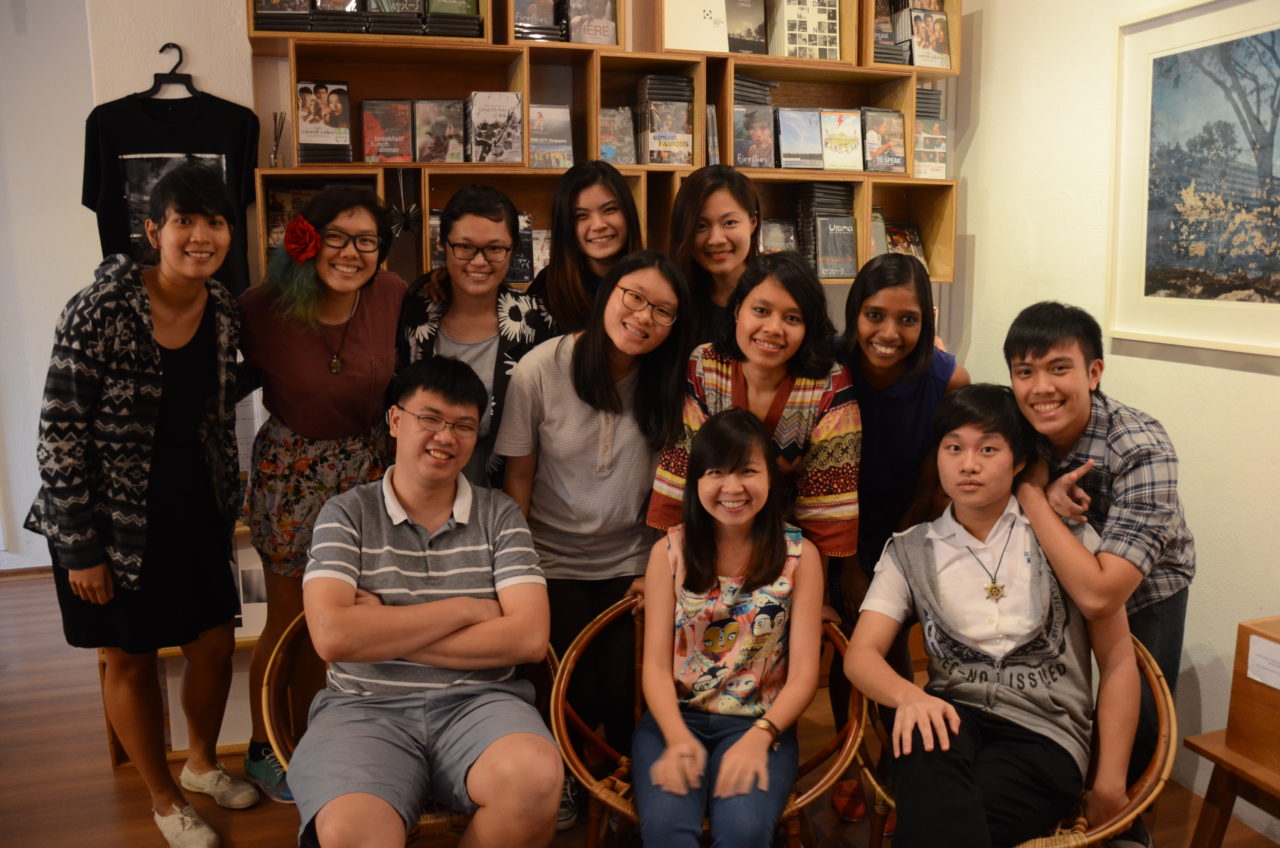Y’all Give Prizes, Too?!: A Breakdown of the Selection Process for the Inaugural Youth Jury Prize

In the opening of Stanley Kubrick’s 2001, blackness. A sun shines over the dark beginnings of a trying earth in promising bloom. Apes surround scavenged bones bewildered, afraid, but excited as hell. Earth is formed.
We may have not figured it out then, but Kubrick was probably referring to us, the inaugural Youth Jurists of SGIFF.
We are the Kubrickian apes in the world of Singaporean youth film criticism.
The brainchild of a collaboration between the Wee Kim Wee School of Communication and Information (WKWSCI) and SGIFF, this handpicked jury consists of 12 youths between the ages of 17 to 25, tasked with the near-insurmountable duty of awarding the Youth Jury Prize to a short film in the South East Asian Short Film Competition.
A grandly frustrating part of our jobs was the selection of the winner of our also inaugural Youth Jury Award. Officially, we have it defined as follows:
This prize is awarded to the short film that provides a fresh and innovative perspective of South East Asia, while seeking to challenge boundaries of themes and film-making techniques. The winning film must also be able to engage audiences emotionally and possess a clear directorial vision within the given medium or genre.
Unofficially, though, it probably stretches as long as one of Kerouac’s original typewritten manuscripts for On the Road. This journey of ours probably runs like a new 9-hour abstract film by Lav Diaz: laden with heavy arguments and discussions wholly appreciable, but very, very painful to go through at some parts. As with any iteration of a maddening, Alice-in-Wonderland tea party from hell, many a blueberry muffin and cup of tea (appropriately pure black) was consumed in these lengthy debates. We were the real Breakfast Club – a name we relished for its truth – writing essays, lamenting ours and others’ decisions. Unlike John Hughes’s delinquents, though, we arguably had far greater responsibilities and less delinquency on our hands.
(Actually, not really – some of us loved particular films so much we threatened to rig the votes. Of course, these instances are what the facilitators are there for.)
It wasn’t so much tough to select the criteria than it was to choose a winner. There’s a reason why we’re getting to watch all these films: a few ethereal beings called programmers in the SGIFF committee saw value, promise, and beauty with each and every one of these films, and made us watch them. We fully agreed. As credit after credit rolled, in our plush makeshift cinema halls, many a tissue was passed around, sniffles heard, snorts of laughter shared. At times we almost cursed the programmers for choosing such consistently amazing films; it made our job that much more difficult.
Accordingly, criteria had to be tightened, and films had to be slashed – otherwise there would nary be a winner, because so many of them, to us, already were. Foremost in our argument was the Southeast Asian aspect of things: which film provided a keen insight of SEA culture and context? Out of nowhere, this little red dot boasts an impressively international film festival, and so it was only natural, we thought, to use the platform of an award to highlight our regional voice.
Then we wondered: is it enough to merely offer up a distinctly regional voice? We looked at one another with brow-raised uncertainty: even the most highly reviled filmmakers could also be said to offer up perspectives of the region. We could name a few, and we did not particularly appreciate their work. And so we concluded that critically, the film had to be unique in presenting the context of its culture; not merely a plagiarism of real life. It had to amaze as well as educate about a local zeitgeist.
Of course, it wasn’t enough to educate about the plight or beauty about a culture. The film had to inherently move. Though we found many films very enlightening and entertaining, many of them did not manage to capture the raw nature of an emotion. Some favoured displays of technical mastery; others focused more on illustrating the beauty of landscapes and form. It was difficult to find a middle ground, one that pristinely straddled both.
So with these factors in mind, we voted.
The result was rather close. Strong objections, passionate defences. Some couldn’t wrap their heads around the winner and why a muddied majority voted for it. Others, ripe with a sense of personal victory, muttered ‘yeses’ and ‘I knew its’ all day. Even days after the vote, in each others’ company while, say, sitting through some incredibly tense film at The Projector – perks of the job – sometimes a Youth Juror arbitrarily blurts out, as a non-sequitur: “I can’t believe my film didn’t make the cut!”
Obviously, it was a decision weighing heavily on our minds. Like recent panels of judges that have made global headlines, our decision might be controversial to some, but by no means did we come to a decision easily. Nonetheless we proudly present our choice of film to be the history-making, inaugural winner of the Youth Jury Award.
Through this brief narrative history, we hope we’ve shed greater light on the judging journey we’ve undertaken. Catch the full breakdown of our decision – and of course, find out the winner – at the Silver Screen Awards on 13 December!


